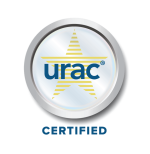The role of remote patient monitoring (RPM) in clinical trials has become even more significant during the COVID-19 pandemic, as the need for virtual clinical trials has increased. Conducting clinical trials remotely / virtually offers several advantages such as reduced costs, improved data accuracy and increased patient engagement. However, there are still challenges to overcome to ensure successful implementation of RPM in clinical trials. It is important to understand the best practices for RPM and the challenges that arise to help ensure successful results.
Best Practices for Implementing RPM in Clinical Trials
Successfully implementing RPM in clinical trials requires careful consideration of best practices. These include:
- Conducting patient assessments to determine RPM eligibility: It is important to carefully assess the suitability of patients or trial participants for remote monitoring in the clinical trial. Assessments may involve evaluating factors such as the participant’s health condition, their ability to use the technology and their willingness to participate in the trial.
- Selection of appropriate technology: It is important to choose the right technology for the specific needs of the trial. Determining the right tech may involve considering factors such as the type of data being collected, the required range between the measuring and receiving devices, and the level of need for real-time monitoring.
- Establishing protocols for data collection and analysis: It is crucial to have clear and well-defined protocols in place for collecting and analyzing patient data collected via the remote monitoring devices. These protocols involve establishing guidelines for data management, analysis, and reporting, as well as defining roles and responsibilities for different team members.
- Incorporating patient education into the protocols: Providing education and support to the trial participants about the use of the remote monitoring devices and software is essential to ensure their engagement and compliance with the trial. Multiple training sessions may be required, as well as written instructions or ongoing support from trial staff.
- Regular communication with participants: Regular communication with trial participants is important to ensure that they remain engaged in the trial and to address any questions or concerns they may have. Consistent communication may involve, for examples, bi-weekly check-ins with participants, or the use of messaging platforms to stay in touch.
- Ensuring the privacy and security of patient data: The collection and transmission of sensitive patient data requires robust security measures to protect against unauthorized access or misuse. These security measures may include data encryption, secure servers, and strict access controls.
- Integration with other clinical trial processes: RPM should be integrated with other clinical trial processes, such as data management and analysis, to ensure a seamless and efficient workflow.
By following these best practices, clinical trial teams can ensure the successful and effective implementation of RPM in their studies. While there may be challenges to overcome, careful planning and attention to these key considerations can help ensure the safe and effective use of RPM in clinical trials.
Overcoming Challenges of Implementing RPM in Clinical Trials
Despite the potential advantages of using RPM in clinical trials, there are several challenges that must be considered, including:
- Ensuring adequate patient engagement and compliance: One of the challenges of using RPM in clinical trials is ensuring that patients are sufficiently engaged and compliant with the trial protocol. Ensuring engagement may involve providing clear instructions and ongoing support to patients on the use of the monitoring devices and software, as well as regular communication to keep them engaged in the trial.
- Ensuring compliance with regulatory requirements: Clinical trials must adhere to strict regulatory requirements, and the use of RPM may require additional considerations in this regard. The FDA has outlined the best ways to collect remote data for clinical trials in draft guidelines that address issues such as patient handling and recording of data with remote monitoring devices, validation of device fitness for use, and evaluation of patient risks during digital tool use. Precautions may involve obtaining necessary approvals, following specific guidelines for data collection and analysis, and demonstrating the reliability and validity of the data collected.
- Addressing data privacy and security concerns: The collection and transmission of sensitive patient data requires robust security measures to protect against unauthorized access or misuse. According to a 2020 study published in Nature Medicine, the rapid adoption of home monitoring tools during the COVID-19 pandemic might pose risks to patient privacy and safety. It is important to ensure that data privacy and security are adequately addressed in the trial protocol, and to follow all relevant regulatory requirements.
- Developing strategies to incorporate remote monitoring into existing clinical trial processes: RPM should be integrated with other clinical trial processes, such as data management and analysis, to ensure a seamless and efficient workflow. It is important to carefully consider how to best incorporate remote monitoring into existing processes and to develop strategies to facilitate this integration.
- Managing logistical issues: Implementing RPM in a clinical trial can involve logistical challenges, such as distributing and maintaining the devices, ensuring that participants have the necessary equipment and software, and dealing with issues that arise during the trial.
- Dealing with technical issues: Technical issues, such as connectivity problems or device malfunctions, can disrupt the data collection process and impact the reliability of the data. It is important to have mitigation plans in place to address these issues and minimize their impact on the trial.
- Ensuring the accuracy and reliability of data collected: The accuracy and reliability of the data collected through RPM is critical to the success of the trial. It is important to carefully validate the data and have robust quality control measures in place to ensure its integrity.
- Need for more research: While RPM has the potential to be a valuable tool in clinical trials, more research is needed to determine the most effective ways to use it. This may involve evaluating different technologies, protocols, and approaches to determine the best practices for implementing RPM in clinical trials.
Addressing these challenges will be essential for leveraging the full potential of RPM in clinical trials. By carefully considering these issues and developing strategies to address them, clinical trial teams can effectively use RPM to collect high-quality data in a convenient and cost-effective manner. In addition, to overcome these challenges and fully leverage the potential of RPM in clinical trials, it is important to look for an RPM partner with the necessary expertise and experience. By partnering with a trusted and reliable RPM provider, clinical trial teams can ensure the successful and effective use of RPM in their studies.
Choose DrKumo for Your Clinical Trial: Real-Time Monitoring, Cloud-Based Platform, and Secure Data Transmission
DrKumo is a leading provider of RPM technology for clinical trials. With a team of experienced professionals and a state-of-the-art platform, DrKumo is the best partner for clinical trials that leverage the many great benefits of RPM.
One of the key advantages of DrKumo is its ability to provide real-time continuous monitoring of trial participants. The company’s platform is designed to allow for the seamless collection and transmission of data in real-time, providing clinical trial teams with a constant stream of information about the health of their participants.
DrKumo is 100% committed to data security and privacy. DrKumo’s robust security measures protect patients against unauthorized access or misuse of patient data, and are fully compliant with all relevant regulatory requirements, including Health Insurance Portability and Accountability Act (HIPAA), National Institute of Standards and Technology (NIST) and National Cybersecurity Center of Excellence (NCCoE).
In addition to its strong focus on data security, DrKumo also offers a user-friendly platform and RPM devices that are easy for patients to use and for clinical trial teams to manage. The company provides clear instructions and ongoing support to ensure that participants are able to use the technology effectively, and offers a range of tools and resources to help clinical trial teams analyze and interpret the data collected.
Overall, DrKumo is the ideal partner for clinical trials looking to implement RPM. With its expertise, technology, and commitment to data security, DrKumo can help clinical trial teams overcome the challenges of using RPM and achieve success in their studies.
Takeaways
RPM provides clinical trial teams with unprecedented opportunities to monitor the health and well-being of participants in a safe, convenient, and cost-effective manner. There are several best practices and challenges that must be considered to ensure the success of RPM in clinical trials. By taking all of these elements into account, clinical trial teams can successfully leverage the power of RPM to improve the safety and quality of their studies.
Partner with DrKumo to ensure the success of your clinical trial with the industry’s leading remote patient monitoring technology. Contact us now.









